The Type 1936 destroyers (Z17 class) were six destroyers of the Kriegsmarine, ordered in 1936, built from 1937 all at Deschmimag in Bremen, and completely before the war started (apart two). As previous ones they were all named after distinguished German seamen killed in World War I. They strongly derived from the type 1934A but were longer and more seaworthy, albeit similar in all other aspects. The Type 1936 was the base for virtually all WW2 Kriegsmarine destroyers, later declined into the 1936A, B and C and the “mob” for mobilization sub-types. Since crews were training in 1939, only action was the occupation of Memel in Lithuania, laying minefields in the German Bight and off the British into early 1940, then Operation Weserübung in April, where they were all famously sunk or scuttled in the Battles of Narvik. Z20 Karl Galster was not there and operated later from France in the Channel, then Norway in 1941-43, taking part in Operation Zitronella, but as customary for this generation of German destroyers she was plagued by engine problems and ended in the Baltic Sea by 1945 escorting or evacuating refugee convoys from east prussia. She ended under Soviet flag and served until 1958. #zerstoerer #kriegsmarine #ww2 #destroyer #germannavy #weserubung #norway #warspite #narvik
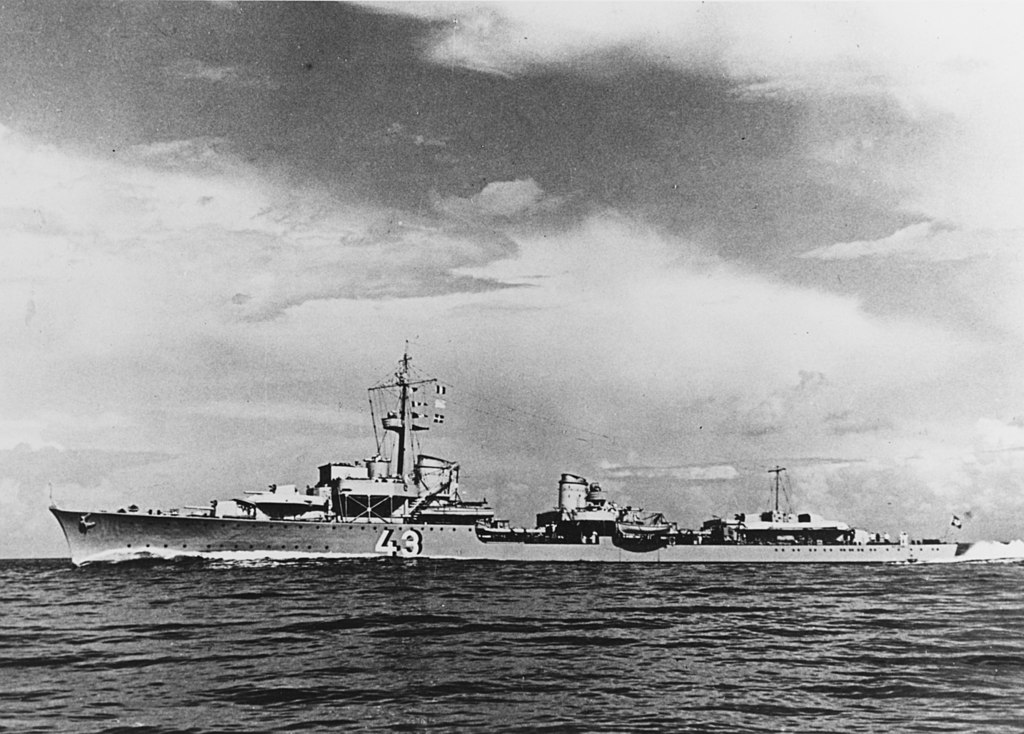
Z21 Wilhelm Heidkamp as built in 1939
Design History
Final design
The Z17 class or Type 1936 where the next incremental evolution of the Type 1934 and 1934A. The master idea was to correct their seaworthiness issues, reworking the prow and bow shape and flare, as well as the transom stern, the so-called Saukeil and counterkeels shape. The rest was virtually a repeat of the previous class, same machinery and armament and only upgrades for the survivor of Narvik, Z20. Only change was their new clipper bow tested by the latter (Karl Galster) creating a sub-class and inaugurating a whole new serie as this bow was repeated for all subsequent Type 1936 destroyers. The previous Z17 to Z19 repeated the bow of Z5 (1934A type).
These six ships were basically enlarged versions of the Type 1934 and Type 1934A classes. However they were designed before the 1934A or even 1934 types were even completed, so stability problems couldnot be guessed, but this was partially fixed by reducing top-weight. The greater advantage was to allow full oil capacity. The compromise was a reduced turning radius. the bow was reshaped again, without uch change in its angle compared to Z5, with a calculated flare to reduce waterspray over the bow in a head sea. Overall seakeeping ability were improved muchn as that was key for the future success of the 1936 Type. Unfortunately these fine ships were let down by a repeat of their over-complicated and troublesome boilers and in egneral the whole powerplant. This was shwon in the class’s trials and early operations until the bcampaign of Norway but plagued the career of Z20.
Construction
Hull and general design
The first three had an overall length of 123.4 meters (404 ft 10 in) but the last three had a new type of clipper bw, much more pronounced, modified while under construction as earlier destoyers had their sea trials and showed issues in heavy seas. This new type of clipper increased Z20, 21 and 22’s overall length to 125.1 meters (410 ft 5 in) but all had the same waterline lenght of 120 meters (393 ft 8 in). They also all had the same beam of 11.75 meters (38 ft 7 in), maximum draft of 4.5 meters (14 ft 9 in).
Displacement was superior to the 1934A at 2,411 long tons (2,450 t) on standard load and 3,415 long tons (3,470 t) deep loaded versus 1625-3165 tonnes. Their stability was improved by several measures resulting in a more favourable metacentric height of 0.95 meters (3 ft 1 in) at deep load. They had of course no armour but at least they were heavily compartimented, with a subdivision below the waterline into 15 watertight compartments. The seven amidships contained the massive propulsion and auxiliary machinery. In addition these were protected by a partial double bottom, running about the same lenght as these sections. As this was still “on paper” work, engineers tried to improved stability by adding a new type of Active stabilizers to try to reduce roll, but they were ineffective on trials. Like for the previous class, they were just replaced by bilge keels. Z20 Karl Galster had them before April 1940.
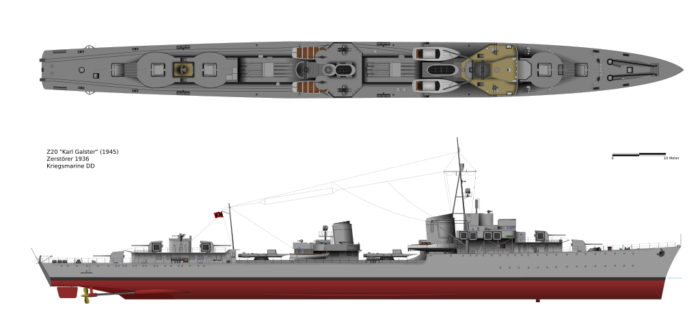
Concerning their general outlook, they repeated the style of the 1934A, but with decreased height and less superstructure mass to gain in stability. The general outlook repeated the scheme of five single shield main guns that defined the forward and rear section, with a superfiring pair A-B forward, a relarively low bridge the a three-faceted face, open roof brdge above, small structure aft dedicated to the main firte control, a tripid mainmast, raked, a main funnel, large in which four boilers exhausts were truncated in, a first torpedo tube bank, the amidship structure, lowered, with the aft raked funnel, with cap as the forefunnel, but smaller as only two boilers had truncated exhausts in. The aft searchlight was on a platfoprm right behind it, the second forward being place high up on the mainmast primary pole, which also stupported the spotting top and radio cables down to the aft half-mast.
Next came the second torpedo tubes bank, and rear quartedeck house supporting X, Y turrets, Z being on deck. In between X and Y was located the radio small house, and on its roof, a 37 mm FLAK. Like previous design, the bridge had broad open wings forming a rough triangle after a flat section, with rounded forward corners, supported by pillars on the beam either side. A radar was added on Z20, installed clear of the main mast and behind the fore fire control telemeter post. The second FCS post was located aft of the amidship structure and funnel.
The hull had a slightly better angle forward at the bow, and the beam profile was gradual with only a limited flat section amidship for abour 1/5 of the lenght in the upper deck. The entire deck was metal, with wood only used on the bridge’s wings and upper open bridge deck.
The crew amounted 10 officers and 313 enlisted men but as flotilla flagships they carried 4 morte officers and 19 enlisted men. Tey could be evacuated by four boats, the two admiraklty motor cutters fore and aft of the main funnel and two pinnaces located on deck under the wings of the amidship structure. Life rafts were installed on the sides of upper turret shields, and the bridge’s wings.
Powerplant
The Type 1936 destroyers repeated the same powerplant as for the 1934/1934A types consisting in two Wagner geared steam turbine sets drivin each a single three-bladed 3.25-meter (10 ft 8 in) propeller. Steam came from six high-pressure Wagner water-tube boilers, each fitted with superheaters in order to operate at a working pressure of 70 atm (7,093 kPa; 1,029 psi) with a temperature of 450 °C (842 °F). This ensemble was designed for an ouput of 70,000 metric horsepower (51,000 kW; 69,000 shp). As contracted and like previous ships, top speed was to be superior to even cruisers and rated for 36 knots (67 km/h; 41 mph).
The first four conducted full sets of speed trials before September 1939 and exceeded their designed speed by far, reaching between 39–41.5 knots (72.2–76.9 km/h; 44.9–47.8 mph) on liught load, based on an output between 72,100 and 76,500 shp (53,800–57,000 kW; 73,100–77,600 PS). If the machinery was cold, like at anchor, they still could power all thei systems, armaments and LAK thanks to the electric ouitput delivered by a pair of 200-kilowatt (270 hp) turbogenerators and two 80-kilowatt (110 hp), plus a single 40-kilowatt (54 hp) diesel generators located also in the better protected amidship section behing their own bulkheads. The Z17 class were designed to carry a maximum of 739 metric tons (727 long tons) of fuel oil. That gave them a range of 2,050 nautical miles (3,800 km; 2,360 mi) at 19 knots (35 km/h; 22 mph). This was much better than the previous 1934A limited to 1,825 nmi (3,380 km; 2,100 mi) at the same speed, adding to the fact they could carry their full load thanks to a better stability. Future classes even improved on this.
Armament
 Like the 1934/34A the 1936 or Z17 class had five main guns, eight AA guns, two quadruple torpedo tubes and 60 mines. They were not designed for ASW work at all, that is until modified. Admiral Erich Raeder designed their armament back in 1933 asking for five guns instead of four (the same as British and French flotilla leaders) and quadruple TTs instead of triple banks.
Like the 1934/34A the 1936 or Z17 class had five main guns, eight AA guns, two quadruple torpedo tubes and 60 mines. They were not designed for ASW work at all, that is until modified. Admiral Erich Raeder designed their armament back in 1933 asking for five guns instead of four (the same as British and French flotilla leaders) and quadruple TTs instead of triple banks.
The five main guns were shielded 12.7 cm (5 in) SK C/34 guns in single mounts covered by gun shields: Superimposed pair A-B forward, same aft, plus the 5th mount positioned on top of the rear superstructure, facing forward. They carried also 600 rounds of ammunition in all.
AA defence comprised four 3.7 cm (1.5 in) SK C/30 anti-aircraft guns in single mounts like for the previous type 1934, 8,000 rounds shared between them. Two were located aft on the upper structure between the N°3 and N°4 mounts, plus six 2 cm (0.79 in) C/30 anti-aircraft guns in single mounts and 12,000 rounds total. This was rounded by the two quadruple torpedo tubes banks, so eight 53.3 cm (21 in) torpedo tubes in all, mounted amidships. This was completed by depht charges and mines.
12,7-cm-Schnelladekanone C/34
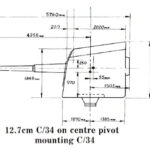 The Z1 class had five 12.7 cm (5 in) guns (a rather standard caliber for the time). These were all shielded, in single mounts: Two superimposed forward, three aft incuding two facing aft, one superfiring, and one facing frorward, the intermediate N°3 mount. For these, they carried 600 rounds of ammunition.
The Z1 class had five 12.7 cm (5 in) guns (a rather standard caliber for the time). These were all shielded, in single mounts: Two superimposed forward, three aft incuding two facing aft, one superfiring, and one facing frorward, the intermediate N°3 mount. For these, they carried 600 rounds of ammunition.
⚙ specifications SK 128 mm (5.04 in) C/34 |
|
| Weight | 3,645 kilograms (8,036 lb) |
| Lenght | 5.76 meters (18 ft 11 in) oa, barrel 5.43 meters (17 ft 10 in) bore |
| Elevation/Traverse | −10° +30°, variable, c300° |
| Loading system | Vertical sliding-block |
| Muzzle velocity | 830 meters per second (2,700 ft/s) |
| Range | 17.4 kilometres (19,000 yd) at 30° |
| Guidance | Optical, data from FCS |
| Crew | c8 |
| Round | 128 x 680mm R separate-loading, cased charge 28 kilograms (61.7 lb) |
| Rate of Fire | 15–18 rpm (maximum) |
FLAK
The anti-aircraft armament (FLAK) comprised the following:
-Four 3.7 cm (1.5 in) anti-aircraft guns, all in single mounts (8,000 rounds of ammunition)
-Six 2 cm (0.79 in) anti-aircraft guns, single mounts (12,000 rounds of ammunition).
Upgrades:
-In 1941 The single 20mm/65 replaced by nine single 20mm/65 C/38 and in 1942, Z5, 6, 10, 14, 15 and 16 had a quad 20mm/65 C/38 Flakvierling instralled on their aft top structure between the N°3-4 main guns.
-In 1944 Z5 received four twin 37mm/69 FlaK M42, and two single 37/57 FlaK M43 and well as four twin 20mm/65 C/38, Z6 received two twin 20/65 C/38, Z10 and Z15 had seven twin 37mm/69 FlaK M42, and three twin 20mm/65 C/38, whereas Z14 also went up seven 20mm/65 C/38 FLAK guns.
Torpedoes
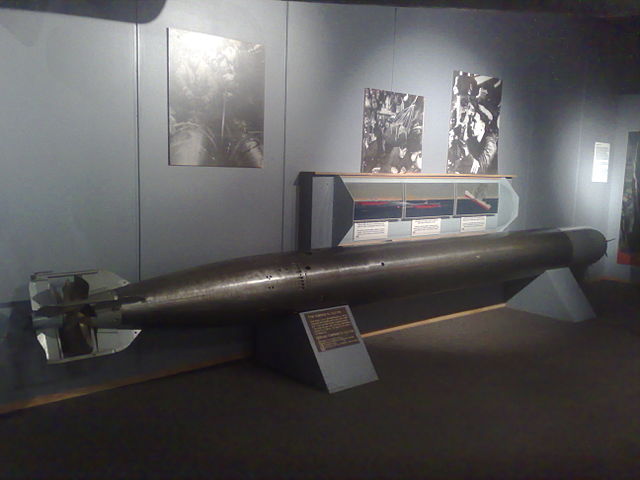
They had eight 53.3 cm (21 in) torpedo tubes, in two quadruple, centerlined in electrically power-operated mounts. They had reloads, obut only four torpedoes, two for each bank.
They were of the 1934 53.3 cm (21″) G7a T1 “ato” class. read more
⚙ specifications TORPEDO |
|
| Weight | 3,369 lbs. (1,528 kg), Negative Buoyancy 605 lbs. (274 kg) |
| Dimensions | 23 ft. 7 in. (7.186 m) |
| Propulsion | Decahydronaphthalene (Decalin) Wet-Heater |
| Range/speed setting | 6,000 m/44 knots, 8,000 m/40 knots, 14,000 m/30 knots |
| Warhead | 617 lbs. (280 kg) Hexanite |
| Guidance | Federapparattorpedo; 1944 Lagenunabhängiger Torpedo |
Mines
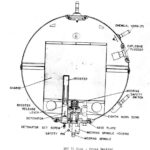 Mine rails were optional, fitted fitted on the rear deck with a capacity of sixty mines total, generally assumed to be the EMC Contact Mines placed on trolley rails. These were spherical mines 44 inch (1.12 m) in diameter and with an explosive load of 661 lbs. (300 kg). Detonation was trusted to seven Hertz horns. These mines could be moored underwater, under 55, 109, 164 or 273 fathoms (100, 200, 300 or 500 m). First captured by the British in October 1939. more on navweaps.com/
Mine rails were optional, fitted fitted on the rear deck with a capacity of sixty mines total, generally assumed to be the EMC Contact Mines placed on trolley rails. These were spherical mines 44 inch (1.12 m) in diameter and with an explosive load of 661 lbs. (300 kg). Detonation was trusted to seven Hertz horns. These mines could be moored underwater, under 55, 109, 164 or 273 fathoms (100, 200, 300 or 500 m). First captured by the British in October 1939. more on navweaps.com/
ASW
Four depth charge throwers were mounted on the sides of the rear deckhouse, plus six racks for individual depth charges on stern sides. This was caluculated for two or four patterns of sixteen charges each. They also came out with the ‘GHG’ (Gruppenhorchgerät) passive hydrophones, fitted underneath the hull, to detect submarines.
These four stern Wasserbombenwerfer C/35 depth charge projector located on the broadsides close to the freeboard to clear mine rails fired a Rheinmetall 606 lbs. (275 kg), initial velocity of 115 fps (35 mps) and an arbor weight of 77 lbs. (35 kg). In total they could carry as high as 64 depth charges charges.
Fire Direction and sensors
The Type 1936 had the same fire control systems, located as said above over the bridge and aft on the amidship structure. They consisted in a large telemeter connected to a ballistic calculator. Data was transmitted to each gun via intercom and indicators to coordinate fire on a single target at once.
Modifications
The onl “survivor” of Narvik (she was not there) was Z20, so she was the only one upgraded unrtl the end of her career.
⚙ specifications Z17 |
|
| Displacement | 2,411 long tons standard, 3,415 long tons deep load |
| Dimensions | 123.4/125.1 x 11.75 x 4.5 m (404 ft 10 i/410 ft 5 in x 38 ft 7 in x 14 ft 9 in) |
| Propulsion | 2× shafts geared steam turbine sets, 6× water-tube boilers 70,000 PS (51,000 kW; 69,000 shp) |
| Speed | 36 knots (67 km/h; 41 mph) |
| Range | 2,050 nmi (3,800 km; 2,360 mi) at 19 knots (35 km/h; 22 mph) |
| Armament | 5× 12.7 cm (5 in), 2×2 3.7 cm, 6× 2cm FLAK, 2×4 53.3 cm TTs, 4× DCR, 6× racks, 60× mines |
| Crew | 323 |
Combat Records
Z17 Diether von Roeder and Z19 Hermann Künne escorted Adolf Hitler to Memel during the occupation if March 1939. From September, Z21 Wilhelm Heidkamp and Z22 Anton Schmitt were still in their trials phase so Z17, Z18, Z19 and Z20 were the only ones that could be sent to lay minefields off the German coast, before moving to the Skagerrak to inspect neutral shipping later joined by Z21, but Z22 was further delayed. From mid-October to February 1940 they laid offensive minefields off the British coast wheh the night was moonless. Z22 Anton Schmitt was operational in January 1940 and joined the others for five of their eleven sorties. Their minefield claimed a British destroyer and 121,348 GRT of merchant shipping.
Operation Weserübung was their shining moment and doom at the same time.
Z21 became flagship for Group 1 in April 1940 and they carried mountain infantry in order to seize Narvik and surrounding defensive posts. They loaded troops on 6 April at Wesermünde, sailed on the 7th, arrived on the 9th, with Z22 and Z18 landing troops at the entrance to the Ofotfjord, the others proceeding to Narvik and Elvegårdsmoen for the same. All landings were successful and without opposition. All objectives were taken. Z21 spotted and sank in Narvik the old coastal defense ship Norge. Her captain was asked to surrender but refused and prepared to combat. But the biggest issue was they were all short on oil, which was also in short supply at Narvik. Resupplies and search for oil proceeded very slowly. Only three destroyers were full on the 10th. Z18 and Z19 were still resupplying when the British 2nd Destroyer Flotilla appeared after dawn. Z21 and Z22 were destroyed and Z19 lightly damaged but also Z18 and Z17 and they unsuccessfully returned fire, launching torpedoes. They were basically sitting ducks in a barrel. The night of 12/13 April left some respite, whereas another attack even larger was awaited the folloiwng day, so dispositions were taken for an ambush. HMS Warspite and nine destroyers were indeed there on 13 April, earlier than expected, catching again the German off balance and out of position. Z19 spotted them first. Z17 was still under repair in Narvik and later joined Z19 as she fell back, defending herself at long range from smoke. The early afternoon, saw the destroyers virtually bound to surrender, damaged, almost without ammunition left and short of oil. They retreated on order to the Rombaksfjorden, east of Narvik for a possible might ambush but Z19 misunderstood signals and sailed into the Herjangsfjord, then ran aground, having fired allamunition including practice and star shells. The crew scuttled her with depth charges and the crew abandoned ship. British destroyers torpedoed her to finish her off. The crew vanished inland and joined mountain troops to continue the fight.
Z18 had still ammunition and torpedoes and sailed to the Straumen narrows with Z2 Georg Thiele. This diversion was to allow the others to scuttle themselves at the head of the fjord. Z18 Hans Lüdemann was initially focused on trying to dodge British fire, but the duel was just under 3 miles (4,800 m). She fired her four remaining torpedoes blindly, all missed. She was soon hit badly and her captain decided to withdraw and beached her at the head of the fjord, then rigged her for demolition. Z2 meanhile protected her and continued to fight but she was sunk. Hourse later British DDs discovered Z18 Hans Lüdemann still intact (demolition charges failed) and torpedoed her.
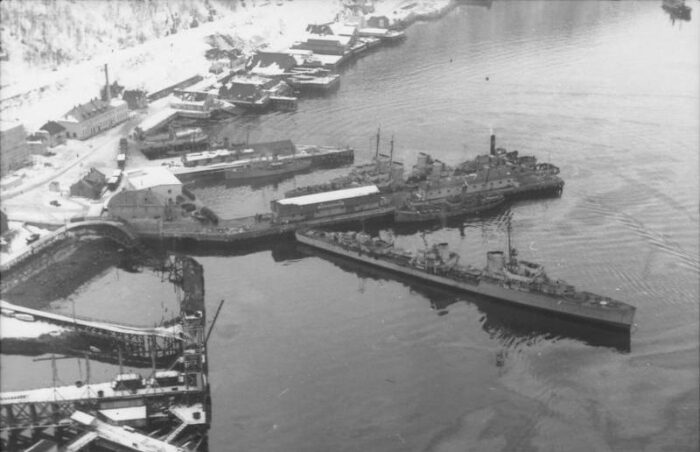
Z17 Diether von Roeder (front) at Narvik, the destroyer in the back is Z9 Wolfgang Zenker. The smaller vessels are captured Norwegian patrol boats.
A British reconnaissance aircraft spotted Z17 and HMS Cossack sailed towards her and the sunken freighters where she was laying in ambush, opened fire at her at point-blank range, putting her aflame, albeit her return fire was devastating. HMS Cossak was hit seven times and sped up to avoid possible torpedo launch, runing aground. However Z17 was also short of ammo and gunners abandoned ship, ammunition exhausted, leaving a three-man demolition party, which lit fuses and ran ashore. Depth charges blew her apart.
It’s a refit that prevented Z20 Karl Galster to join Operation Weserübung, she still was sent to Norway for escort duties, later fought in France as the flagship of the 5th Destroyer Flotilla, laying minefield in the English Channel and later was transferred to Norway for Operation Barbarossa. Her anti-ship missiones were fruitless. She escorted convoys in the Arctic but was plagued by multiple engine problems and was left ub Germany several times for repairs. Back to Norway in mid-1942, she ran aground in July, was repaired and retutned in December. She took part in Operation Zitronella on Spitzbergen by September 1943. But engine problems had her in repairs from November to August 1944 with six months on convoy escort and laying minefields. In March 1945, she evacuated refugee or rescorts convoys in the Baltic Sea for east Prussia; She ended in Russian flag postwar as Prochnyy.
So overall, it’s difficult to assess exactly what these destroyers were capable of, largely due to circumstances. The design was improved overall, Z20 onwards even set the tone for future German destroyers, they had a solid armament and were versatile, used with relative success as minelayers, had better range, better seaworthiness and stability as well increased speed, but they also repeated the disastrous powerplants of their precedessors which stuck Z20 for way too much time in repairs. A fate her sisters escaped as their engines were brand new when they started their Norwegian campaign. But this mission was pretty much a “one way ticket”. Once trapped, “bagged” into Narvik fjord networks they were doomed. Short of oil and ammunition they could do little and albeit Bey’s plans for a night ambush, whatever desperate, could have bore fruits, they lacked intel on the British position, a common feature of the Kriegsmarine which lacked coordination with the Luftwaffe, unlike the Heer.
Operational Service of the Type 1934A destroyers
 Z17 Diether von Roeder
Z17 Diether von Roeder
Z17 was odered on 6 January 1936 and built at AG Weser/DeSchiMAG, Bremen, laid down on 9 September 1936, launched on 19 August 1937 and completed on 29 August 1938. She was named after a Kapitänleutnant who commanded the 13th Torpedo Boat Half-Flotilla in World War I, KiA 11 June 1918. The ship was ordered from (Deschimag). From 23 to 24 March 1939 she escorted Adolf Hitler aboard KMS Deutschland to occupy Memel. After fleet exercise in the western Mediterranean and visuted to Spanish and Moroccan ports by April-May she joined in July Z18 and Z19 for a visit to Norway.
In September, she laid a minefield with her sisters in the German Bight and patrolled the Skagerrak to inspect neutral shipping for contraband goods. On 17/18 October, Konteradmiral Günther Lütjens aboard Z21 led Z16, Z17, Z18, Z19, and Z20 (Z22 was still working up) to lay laid a minefield off the mouth of the River Humber. This claimed 7 ships and 25,825 GRT, prompring the admiraklty to do night patrols.
As the Norwegian campaign started, Z17 Diether von Roeder was allocated to Group 1 by April 1940, tasked with carrying the 139th Gebirgsjäger (Mountain Infantry) Regiment and the 3. Gebirgs-Division HQ and seize Narvik. Troops were loaded on 6 April, she arrived at Ofotfjord on 9 April but remained at the mouth of the fjord, the other proceeding inwards for the landing. She stayed behind as a picket ship (Luftwaffe absent) to warn of a possible British approach. Z17 was relieved and could land her troops but returned the following night under Korvettenkapitän Erich Holtorf. He however mistook his orders’s schedule and returned to Narvik harbor before what was planned, leaving the approache sof the fjord unattended. This was the cause of the whole catastrophy for the Kriegsmarine.
Meanwhile indeed, the five destroyers of the British 2nd Destroyer Flotilla (H class: HMS Hardy, Havock, Hunter, Hotspur, Hero) approached, hiddent by the jagged coast, and trailed behind Z17 in turn. They were invisible in the dark and snow but just behind. However visibility improved and the first battle of Narvik commenced. They torpedoed two German destroyers and badly damaged two others, Z17 firing all of her torpedoes blindly at the harbor entrance and started a gunnery duel in driving snow. She missed (a postwar hypothesis that that these torpedoes had their depth controls set too deep). Her gunfire was equally ineffective. Visibility cleared more and the attack in the harbor now saw Z17 a shell magnet. Five 4.7-inch (120 mm) shells at keast hit here in short succession, destroying her No. 3 gun, rudder controls, center and aft boiler rooms, and put the oil tank on fire. Most survivors were later used to help secure the town of Narvik and her radios were taken ashore to improve communication with other German commands.
Afte the British retired, short of fuel themselves, estimated she was done, a party inspected damage and concluded at least a week was necessary to make her mobile and leave for Germany at the first opportunity. Her light weapons were off-loaded, her stern was tied to the pier leaving her only two forward guns operational. On the night of 12/13 April Fregattenkapitän Erich Bey, surviving senior officer knew a British capital ships plus destroyers and an carrier aircraft were on the way. He took dispositions, but unfortunately for him, HMS Warspite and nine destroyers appeared on 13 April way sooner that expected and catching the Germans completely off guard.
HMS Punjabi and Bedouin appeared first and engaged Z12, which only had 25 gunners left on board. Z17 Diether in turn started fire and some her shells hit Warspite’s bridge, with minor damage. The British believed this was reclaimed coastal artillery until a Fairey Swordfish confirmed Z17 position. Cossack (one of the 1937 Tribals, powerfully armed) approached in the maze of sunken freighter’s wrecks to investigate, spotted Z17 and opened fire at 2,500 meters (2,700 yd). Her second salvo found their mark and Z17 had her stern ablae, but her gunners expected that move ad were prepared, very accurate for their return fire. Cossack was hit at least seven times, her worward boiler room steam pipe wa sbroke, center boiler room badly damaged, a massive fire started and she lost steering. She ran aground with 9 killed, 21 wounded. HMS Kimberley and Warspite however found their mark and Z17 Diether was hit just as her gunners, short of ammunition left, leaving a demolition party behind. When her depth charges exploded, the closest destroyer which came from inspection was just 50 meters (55 yd) away, with a boarding party ready. Z17 in a way had avenged Graf Spee’s supply ship Altmark, captured in Norway by the very same Cossak in 1939.
 Z18 Hans Lüdemann
Z18 Hans Lüdemann
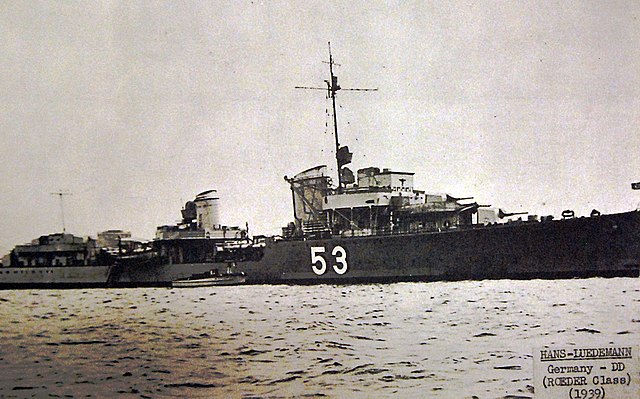
Z18 was laid down on 9 September 1936, launched on 1 December 1937 and completed on 8 October 1938, named after an Engineer-Midshipman Hans Lüdemann who saved the lives of the remaining men in the engine room in the torpedo boat S-13 after her cylinder exploded on 14 May 1913. In July 1939 she hoined Z17 and Z19 for a port visit in Norway and in September, she took part in the German Bight minelaying, patrolled the Skagerrak and took part in the 17/18 October Lütjens’s minelaying operation at the River Humber. On 12/13 November under orders from Kapitän zur See Friedrich Bonte aboard Z21 she took part in another mission, laying 288 magnetic mines in the Thames estuary, claiming the DD HMS Blanche and 13 merchant ships for 48,728 GRT. On 1 December she was refitted in Stettin for three months.
For the Norwegian campaign, Z18 was allocated to Group 1, carrying the 139th Mountain Infantry Regiment and 3rd Mountain Division HQ to seize Narvik, loading troops on 6 April, arriving at Ofotfjord on 9 April. Z18 and Z22 landed their troops at the Ramnes narrows which tried to find and capture coastal artillery positions. At 11:00 these troops reboarded their destroyers, which proceeded to Narvik. After midnight, Z18 was ordered to start fuelling from the whale factory ship SS Jan Wellem, a long process. At dawn on 10 April, she was till proceeding in refelling when the 2nd Destroyer Flotilla appeared. She maneuvered clear of the tanker, and started firing at HMS Havock, but missed in the poor visibility, dark and snow. The latter returned fire and destroyed her forward guns, but also severed her rudder controls plus a fire obliged to flood magazines, loosing precious ammunitions. At 05:15 Z18 radioed to the other in Herjangsfjord and Ballangen what happened. 15 minutes later the British returnd to finish them off, but some repairs had been made on Z18 which could manoeuver and launch four torpedoes at them, missing. She hit one with her guns but missed mostly. Her temporary repairs were completed on 11 April.
On the night of 12/13 April under Fregattenkapitän Erich Bey she was still present when Warspite and nine destroyers appeared at dawn. Z19 was leading Z13 westwards to take up her flanking position at the entrance to the fjord for an ambush, and was caught off guard, spotting them and alerting Bey. Z18 Hans charged out of Narvik to engage them at long range, behind a smoke screen. They only did splinter damage but lack of ammunition forced her back to the Rombaksfjorden east of Narvik for a possible might ambush. She had little ammunition but four torpedoes left and arrived at the Straumen narrows with Z2 in order to leave time to the others to to scuttle themselves at the head of the fjord. Z18 opened fire from 3 miles (4,800 m) to little effect on the approaching destroyets, and fired blindly her remaining four torpedoes, missed. Forester’s spotted one passing right blow the hull, confirming they had the wrong depth setting. HMS Eskimo hit her twice, destroying No. 4 and No. 5 guns, damaging No. 3. She was now toothless. Korvettenkapitän Herbert Friedrichs then decided to withdraw and beached her to save the crew, at the head of the fjord. He was to leave a parti to rig her for demolition and abandoned ship. Z2 covered her retreat menwhile. When Hero and Icarus approached Z18 deserted and still intact as demolition charges failed they sent a boarding party aboard and looked for paper but found nothing but souvenirs. Hero was ordered to torpedo her.
 Z19 Hermann Künne
Z19 Hermann Künne
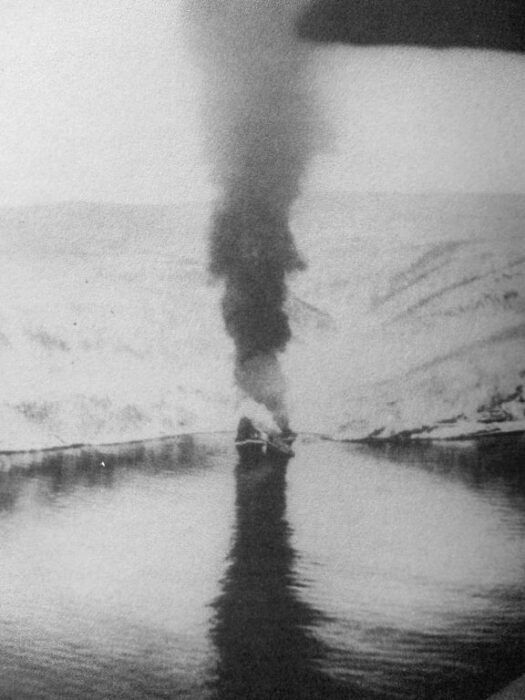
Z19 on fire on 13 April 1940.
Z19 Hermann Künne was laid down on 5 October 1936, launched on 22 December 1937 and completed on 12 January 1939. She was named after a gunner on S-53 KiA hand-to-hand combat in the Zeebrugge Raid on 23 April 1918. From 23 to 24 March she escorted Adolf Hitler to Memel and 30 June made port visits in Norway but she rammed the pier at Moldefjord after a rudder jamming. She took part later in torpedo training. In September like the others she was in the German Bight, Skagerrak and took part in the minelaying raid on 17/18 October in the Humber. She missed however the raids of 8/9 and 10/11 November due to seawater contamination in her fuel, probably to leakages. She took part in the raid on 12/13 November in the Thames estuary and the same on 17/18 November. This minefield cmaimed the minelayer HMS Gipsy, a trawler and seven ships for 27,565 GRT. He also took part in the 12/13 December raid under Kommodore Bonte in the River Tyne, claiming eleven ships for 18,979 GRT. They escorted back the crippled light cruisers Leipzig and Nürnberg after being hit by HMS Salmon. Z19 missed the raid on 17 December due to boiler contamination and was refitted in Stettin until 14 March 1940.
In the Norwegian campaign she joined Group 1 with all what said above. Z19 Hermann Künne landed her troops at the head of the Herjangsfjord, providing cover fire to capture the Army barracks at Elvegårdsmoen. Later she refuelled from the whale factory ship SS Jan Wellem and was sent as in picket duty until midnight before returning to refuel. On 10 April she was still tied to Jan Wellem when the 2nd Destroyer Flotilla engaged the 1st battle of Narvik. Z19 duelled brifly with HMS Hunter and prepared to leave the whaler. Havock spotted her when she was underway, hit her but also sank Z22 with a torpedo. Z19 when it happened was just only 40 meters and the detonation shock knocked out her turbines. She drifted into the wreck and got stuck. Some in her crew jumped overboard but after an hour, she had power restored, disentangle from Z22’s wreck, until then only having splinter damage, 9 dea, a dozen wounded. Later the afternoon she she apssed the wreck of HMS Hardy which ran aground and found a better position. On 12/13 April she was warned of an attack by a capital ship which happened sooner than expected. Z19 when it happened was leading Z13 flanking the entrance to the fjord, spotted them and alerted Bey. She fell back and engaged the British at long range under smoke but soon was attacked by nine Fairey Swordfish, near-missing Z19. Two were shot down. The destroyers however soon exhausted most of their ammunition and retreated to Rombaksfjorden. Under Korvettenkapitän Friedrich Kothe she misunderstood the signal and headed into the Herjangsfjord instead. Not familiar with surroundings her rank aground in Trollvika, near Bjerkvik. Her ordered the depth charges rigged for demolition and abandoned ship. She was later discovered and finished off by HMS Eskimo and Forester. She was partially scrapped but in a 1999 survey, the remaining wreck was found to contain no remaining oil. Diving is permitted there.
 Z20 Karl Galster
Z20 Karl Galster

Z20 Karl Galster was laid down on 14 September 1937, launched on 15 June 1938 and completed on 21 March 1939. She was named after a Kapitänleutnant who commanded the torpedo boat S22, KiA on 21 March 1916. She visited Åndalsnes in Norway, in July 1939 and took part in a torpedo training exercise. In September she had the same activities as her sisters, German Bight, patrols in the Skagerrak, raid on 17/18 October to the Humber and 12/13 in the Thames estuary and patrols in the German Bight.
There was a new minelaying sortie on 10/11 January 1940 but without Z14 and Z4 left behind due to boilers issues. After the Altmark Incident Operation Nordmark was launched to hunt for Allied merchant ships in the North Sea, as far as the Shetlands. Z20 and Z21 escorted KMS Scharnhorst and Gneisenau as well as Admiral Hipper on 18 February 1940. Upon her return Z20 started a refit lasting until 27 May, so she missed the Norwegian Landigs and fate of all her sisters. She was the only one left.
Surviving destroyers were reorganized by Raeder and Z20 became flagship of her unit. In June she escorted Scharnhorst, Gneisenau, and Hipper for Operation Juno, a planned attack on Harstad which saw the sinking of the transport Orama, oil tanker Oil Pioneer and minesweeping trawler Juniper en route towards Narvik, but Z20 assisting in the rescue of Orama. Admiral Wilhelm Marschall ordered Hipper and her four escort destroyers into Trondheim instzad due to the heavy weather, on 9 June. Z20 remained there and departed to escort back the crippled Gneisenau to Kiel on 25 July. After a refit she laid minefields in the North Sea until 7 September 1940.
As flagship of KzS Fritz Berger, 5. Zerstörerflotille she sailed with her unit to France on 9 September for Operation Sealion (invasion of Great Britain), in Brest. She laid a minefield in Falmouth Bay on 28/29 September (5 ships sunk, 2,037 GRT). Next she made another sortie under KzS Erich Bey on board Z10 on the Southwest Approaches on 17 October. They were spotted by a force of two light cruisers and five destroyers and a duel started at extreme range. The British disengaged first after the the four German destoryers launched their torpedoes, and Luftwaffe bombers. On 24–25 November, Z20, Z4, Z10 sortied from Brest to the Finnisterre in britany (Land’s End) area and sunk a few fishing ships off Wolf Rock, spotting later a small convoy with three merchantmen sank and another baldy damaged. The British 5th Destroyer Flotilla was alerted and scrambled but could no catch he Germans that went back to Brest at night. These raids were repeated over three nights, for the result of 2 tugboats and a barge. The 5th Destroyer Flotilla no.w already ready to pounce caught them at last at 06:30 on 29 November. The German destroyers launched four torpedoes each and fired, Z10 Hans sinking HMS Javelin, which lost both her bow and stern. Bulkheads stood firm and she could towed to home… Z20 sailed east towards Wesermünde on 5 December for a turbine overhaul, until 9 June 1941.
On the 11th she escorted Lützow (ex-Deutschland) from Kiel to Norway through the British blockade. They were attacked by Bristol Beaufort torpedo bombers en route and she was hit by a torpedo, back for repairs on 13 June. Z20 proceeeded nevertheelss to Kirkenes on 11 July. She entered the 6. Zerstörerflottille and sortied on 12–13 July sinking two small Soviet ships. Same on 22 July, but as flagship for KzS Alfred Schulze-Hinrichs, Z10 Hans being in repairs for condenser problems. She sank a small survey ship flying boat while being attacked by Soviet aircraft. Victorious and Furious attacked Petsamo and Kirkenes on 29 July and Z20 was sent in pursuit but arrived too late. Next she escort convoys between Tromsø and Kirkenes. HMS Trident sank the troop Bahia Laura and Donau II under her guard. Z20 rescued over 500 survivors. Z10 being in refit Z20 became flagship until she had engine problems herseld, sailing for home and repairs on 23 November, until 5 May 1942.
She later became flagship of KzS Gottfried Pönitz, 8. Zerstörerflottile. She headed for Trondheim on 11 June and escorted Tirpitz during Operation Rösselsprung against PQ 17 from 2 July but all destroyers including Z20 ran aground in the dark and heavy fog. This was cancelled and they needed repairs. Her port turbine and port propeller shaft notably, in Kiel from 12 July until mid-November. On 8 December she ecorted Lützow to Norway but returned after storm damage to rondheim for repairs until 9 January 1943. Then Boiler damage forced more repairs until 27 February.
On 11 March 1943, Z20 screened Tirpitz to Bogen Bay and Altafjord joining Scharnhorst, and Lützow. Next she sortied with Z5 and Z6 to Jan Mayen island on 31 March to escort MV Regensburg. Heavy weather forced them back with damage. Z20 on 6–9 September raided Spitsbergen and landed troops on the island. In November she was back to Bremen for an overhaul and was stuck with issues to her starboard turbine until April 1944, returning in dockyard. Next she escorted convoys in southern Norway and laid minefields in the Skagerrak. She had a brif refit in Oslo between 20 December and 13 January 1945 and laid a minefield in the North Sea on 8 March. She was transferred to the Baltic for escort and patrolms afterwards as the Coastal Command was now ruling the skies over the north sea and channel.
In May, she sortied to evacuate civilians and troops trapped in east Prussia. They were evacuated to Copenhagen until Denmark surrendered on 5 May and Z20 transferred survivors on ships and was ordered soon by Großadmiral Karl Dönitz to “Curry”, in fact a rescue mission to the Hel Peninsula. There were a few remaining footholds on 8 May indeed but at 22:00, Z20, Z14, Z25 and T23, T28 managed to evacuate 1,200 to 2,000 soldiers each. As ther armistice took effect they were ordered to sail for a port under Soviet control, but Z20 outrun pursuing Soviet torpedo boats and reached Flensburg and then Kiel, where she surrendered to the British,s decommissioned on 10 May. She was sent to Wilhelmshaven for the Allies divide them as war reparations. On 6 February 1946 she sailed to Liepāja, Latvia to be renamed Prochnyy , joing the Red Banner Baltic Fleet on 5 November. She was later converted a a training ship in 1950, then accommodation ship PKZ 99 in November 1954, scrapped in 1958. The Soviets were probably not impressed by her powerplant…
 Z21 Wilhelm Heidkamp
Z21 Wilhelm Heidkamp
Z21 Wilhelm Heidkamp was laid down on 14 December 1937, launched on 28 August 1938 and completed on 20 June 1939, named after a Machinist’s mate in charge of the pumps on the battlecruiser SMS Seydlitz during the Battle of Dogger Bank on 24 January 1915. He was badly burned when turning the valves to flood the aft magazines in fire, saving the ship. She became the flagship Rear Admiral Günther Lütjens when patrolling the Skagerrak bt late September and took part in the raid on 17/18 October in the Humber and Thames Estuary on 17/18 November. She was refitted at Stettin between 27 November and 24 December and made anotther raid off Newcastle on 10/11 January 1940. She escorted Scharnhorst and Gneisenau, Hipper for a sortie on 18-20 February and for the Operations in Norway she became flagship for Group 1, under Kommodore Bonte. On 9 April, she sank the old coastal defense ship Eidsvold with torpedoes and landed troops in Narvik, then refuelled from SS Jan Wellem, the only source of fuel left in the harbour. Brigadier General Eduard Dietl of the 3rd Mountain Division asked Z21 to remain in harbor for radio coordination.
On 10 April she was still moored alongside Jan Wellem in Narvik when the 2nd Destroyer Flotilla arrived and she was was struck in the stern by a torpedo. Thius blew up her aft magazine and set her aft guns into the air while costing her crew 81 dead, including Bonte. Korvettenkapitän Hans Erdmenger managed still to moor her to a nearby Swedish freighter and she was avacuated, capsizing the following day with her torpedoes transferred to surviving destroyers. Her crew and others soon joined an ad-hoc naval infantry unit which fought alo,gside Mountain troops for the remainder of the campaign.
 Z22 Anton Schmitt
Z22 Anton Schmitt
Z22 Anton Schmitt was laid down on 3 January 1938, launched on 20 September 1938 and completed on 24 September 1939, named after a Bosun’s Mate, last man operating a gun on the sinking light cruiser Frauenlob in the Battle of Jutland, and went down with her. She missed early operations in the jade and Skagerrak but helped to lay a minefield near Newcastle with Z21, Z16 and Z20 on 10/11 January 1940. For the Norwegian Campaign she was allocated to Group 1, transporting the 139th Mountain Infantry Regiment and 3. Gebirgs-Division HQ to seize Narvik. With Z18 she landed troops at the Ramnes narrows until they reboard them to proceed to Narvik. Z22 was sent in picket duty and then returned to Narvik, short of oil. On 10 April she was caught by the 2nd Destroyer Flotilla, and took a single 4.7-inch (120 mm) shell and torpedo in her forward engine room. Havock finished her off with another torpedo breaking her in half, killing or wounding 50. Survivors joined the “Kriegsmarine batallion” on shore.
Read More
Books
Gröner, Erich (1990). German Warships 1815–1945. Vol. 1: Major Surface Warships. Annapolis, Maryland: Naval Institute Press. ISBN 0-87021-790-9.
Haarr, Geirr H. (2009). The German Invasion of Norway, April 1940. Annapolis, Maryland: Naval Institute Press. ISBN 978-1-59114-310-9.
Hervieux, Pierre (1980). “German Destroyer Minelaying Operations Off the English Coast (1940–1941)”. In Roberts, John (ed.). Warship. Vol. IV. Greenwich, England: Conway Maritime Press. pp. 110–117. ISBN 0-87021-979-0.
Koop, Gerhard & Schmolke, Klaus-Peter (2003). German Destroyers of World War II. Annapolis, Maryland: Naval Institute Press. ISBN 1-59114-307-1.
Rohwer, Jürgen (2005). Chronology of the War at Sea 1939–1945: The Naval History of World War Two (Third Revised ed.). Annapolis, Maryland: Naval Institute Press. ISBN 1-59114-119-2.
Whitley, M. J. (1991). German Destroyers of World War Two. Annapolis, Maryland: Naval Institute Press
Links
On en.wikipedia.org/
on navypedia.org/
on youtube.com/
Model Kits
scalemates.com/ trumpeter zerstörer Z-21
free3d.com/ 1936-class-german-navy

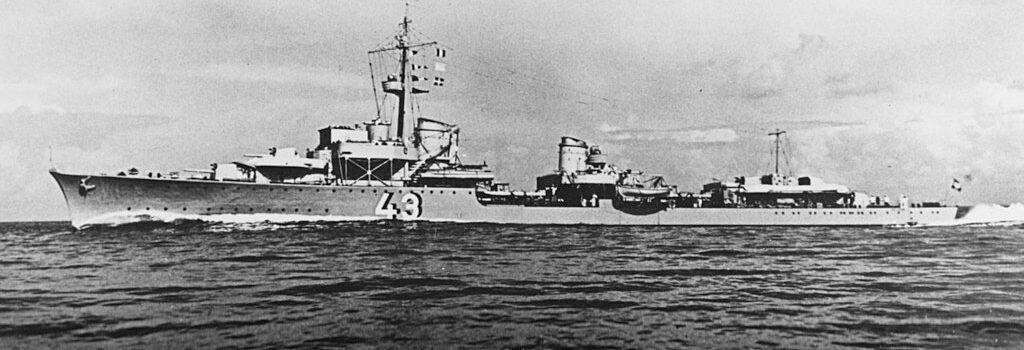

 Latest Facebook Entry -
Latest Facebook Entry -  X(Tweeter) Naval Encyclopedia's deck archive
X(Tweeter) Naval Encyclopedia's deck archive Instagram (@navalencyc)
Instagram (@navalencyc)





 French Navy
French Navy Royal Navy
Royal Navy Russian Navy
Russian Navy Armada Espanola
Armada Espanola Austrian Navy
Austrian Navy K.u.K. Kriegsmarine
K.u.K. Kriegsmarine Dansk Marine
Dansk Marine Nautiko Hellenon
Nautiko Hellenon Koninklije Marine 1870
Koninklije Marine 1870 Marinha do Brasil
Marinha do Brasil Osmanlı Donanması
Osmanlı Donanması Marina Do Peru
Marina Do Peru Marinha do Portugal
Marinha do Portugal Regia Marina 1870
Regia Marina 1870 Nihhon Kaigun 1870
Nihhon Kaigun 1870 Preußische Marine 1870
Preußische Marine 1870 Russkiy Flot 1870
Russkiy Flot 1870 Svenska marinen
Svenska marinen Søværnet
Søværnet Union Navy
Union Navy Confederate Navy
Confederate Navy Armada de Argentina
Armada de Argentina Imperial Chinese Navy
Imperial Chinese Navy Marinha do Portugal
Marinha do Portugal Mexico
Mexico Kaiserliche Marine
Kaiserliche Marine 1898 US Navy
1898 US Navy Sovietskiy Flot
Sovietskiy Flot Royal Canadian Navy
Royal Canadian Navy Royal Australian Navy
Royal Australian Navy RNZN Fleet
RNZN Fleet Chinese Navy 1937
Chinese Navy 1937 Kriegsmarine
Kriegsmarine Chilean Navy
Chilean Navy Danish Navy
Danish Navy Finnish Navy
Finnish Navy Hellenic Navy
Hellenic Navy Polish Navy
Polish Navy Romanian Navy
Romanian Navy Turkish Navy
Turkish Navy Royal Yugoslav Navy
Royal Yugoslav Navy Royal Thai Navy
Royal Thai Navy Minor Navies
Minor Navies Albania
Albania Austria
Austria Belgium
Belgium Columbia
Columbia Costa Rica
Costa Rica Cuba
Cuba Czechoslovakia
Czechoslovakia Dominican Republic
Dominican Republic Haiti
Haiti Hungary
Hungary Honduras
Honduras Estonia
Estonia Iceland
Iceland Eire
Eire Equador
Equador Iran
Iran Iraq
Iraq Latvia
Latvia Liberia
Liberia Lithuania
Lithuania Mandchukuo
Mandchukuo Morocco
Morocco Nicaragua
Nicaragua Persia
Persia San Salvador
San Salvador Sarawak
Sarawak Uruguay
Uruguay Venezuela
Venezuela Zanzibar
Zanzibar Warsaw Pact Navies
Warsaw Pact Navies Bulgaria
Bulgaria Hungary
Hungary

 Bundesmarine
Bundesmarine Dutch Navy
Dutch Navy Hellenic Navy
Hellenic Navy Marina Militare
Marina Militare Yugoslav Navy
Yugoslav Navy Chinese Navy
Chinese Navy Indian Navy
Indian Navy Indonesian Navy
Indonesian Navy JMSDF
JMSDF North Korean Navy
North Korean Navy Pakistani Navy
Pakistani Navy Philippines Navy
Philippines Navy ROKN
ROKN Rep. of Singapore Navy
Rep. of Singapore Navy Taiwanese Navy
Taiwanese Navy IDF Navy
IDF Navy Saudi Navy
Saudi Navy Royal New Zealand Navy
Royal New Zealand Navy Egyptian Navy
Egyptian Navy South African Navy
South African Navy






























 Ukrainian Navy
Ukrainian Navy dbodesign
dbodesign